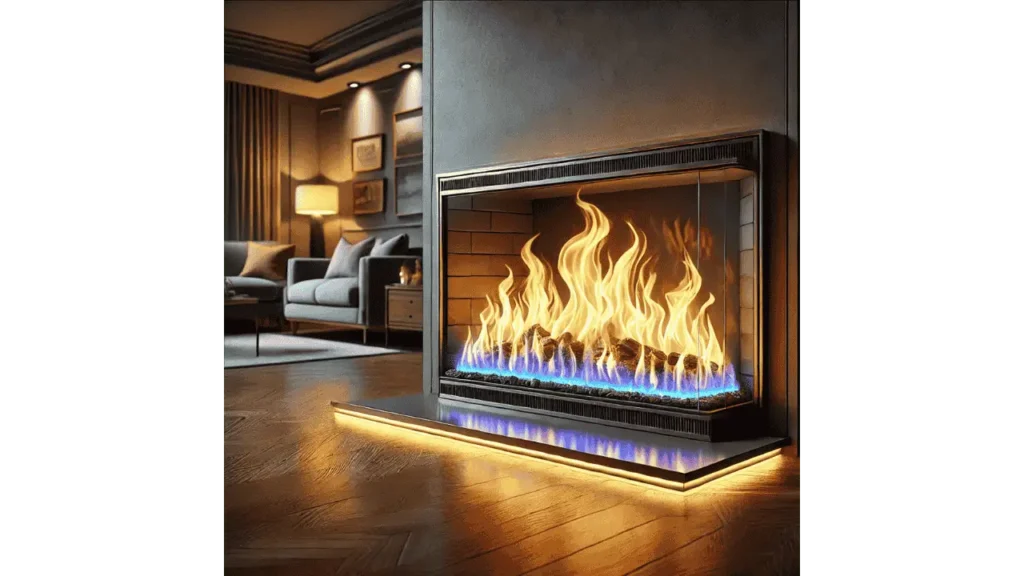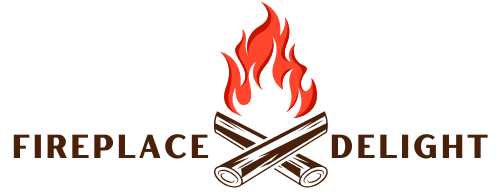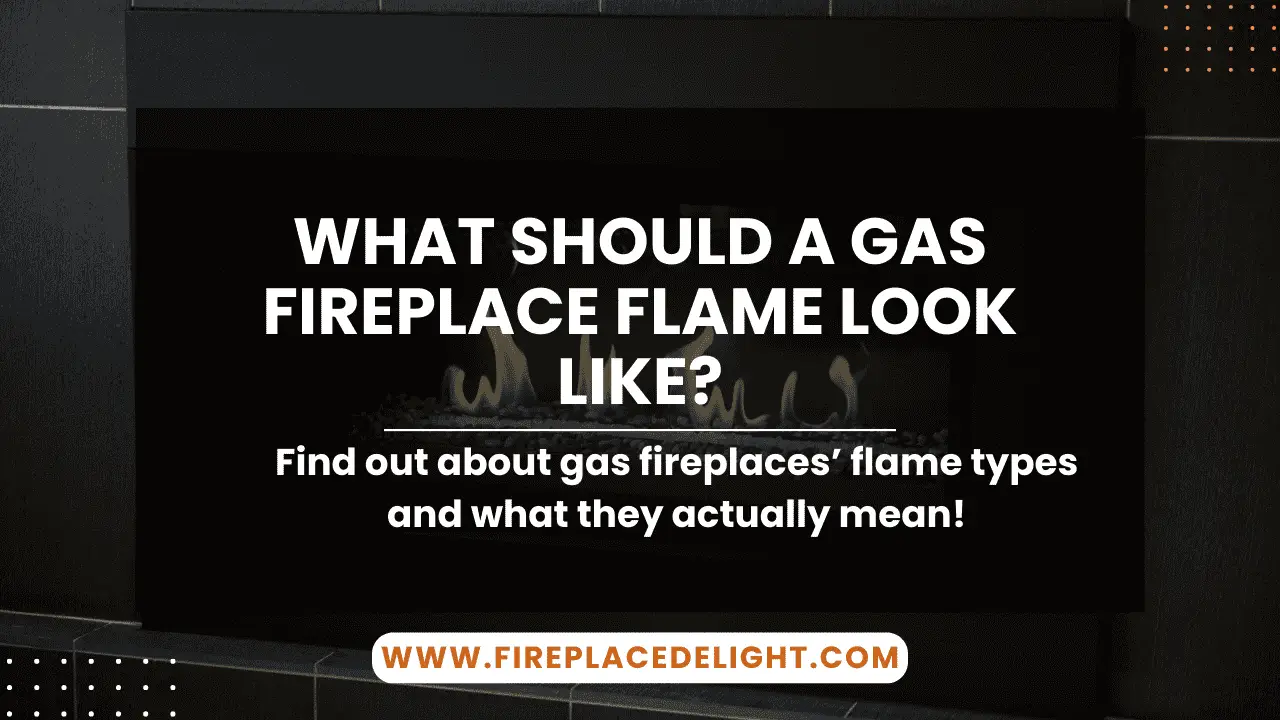If you’ve ever wondered whether your gas fireplace flame looks right, you’re not alone. The color, shape, and behavior of the flame can reveal a lot about how safely and efficiently your fireplace is running. I know firsthand that understanding these signs can make all the difference in keeping your home cozy and safe. In this guide, we’ll cover what a healthy flame should look like, warning signs of potential issues, and why regular maintenance matters. By the end, you’ll know exactly how to keep your fireplace in top shape for worry-free warmth all season long.

What is a Gas Fireplace Flame?
A gas fireplace flame is the heart of your fireplace, providing both warmth and ambiance. It’s created by igniting natural gas or propane, which burns cleanly when everything’s working right. Unlike a traditional wood fire, a gas flame is designed to burn in a controlled, steady way, delivering consistent heat with minimal emissions. Personally, I find it comforting to know my gas fireplace is safe and efficient when the flame looks just as it should. In the next sections, we’ll cover what an ideal flame looks like and how to spot signs that might need attention.
Learn More: Difference between Gas Fireplace and Central Heating
Basic Description of a Gas Fireplace Flame
A gas fireplace flame should be steady, with a well-defined shape that doesn’t waver excessively. Typically, it’s blue at the base with hints of yellow or orange at the tips, which indicates efficient burning. This color combination means the gas is being burned completely, providing warmth without excess soot or carbon buildup.
Function of the Gas Fireplace Flame
The flame’s primary role is to produce heat, but it also adds that cozy ambiance we love. Beyond warmth, it’s designed to burn cleanly, minimizing harmful emissions. When the flame is consistent and the right color, it means your fireplace is operating efficiently, keeping your space both safe and comfortable.
What Should a Gas Fireplace Flame Look Like?
A healthy gas fireplace flame not only keeps your home warm but also shows that your fireplace is operating safely. The appearance of the flame is a good indicator of how well the fuel is burning, helping you spot any potential issues. Let’s break down the key color variations and characteristics to look for:
Blue Flame vs Yellow Flame
A predominantly blue flame at the base with yellow tips is ideal for gas fireplaces, signaling efficient combustion. The blue base indicates that the gas is burning cleanly, with enough oxygen for complete combustion. If the flame is entirely yellow or orange, it may mean incomplete combustion, which can produce excess soot or carbon monoxide. Keeping an eye on this balance helps ensure both warmth and safety.
Characteristics of a Properly Burning Gas Fireplace Flame
A properly burning gas fireplace flame should be steady, bright, and well-distributed across the burner. It should have a strong blue base and some flickering yellow tips, giving off a natural, warm glow without producing soot. This balanced, steady flame is what you want to see, as it indicates that your fireplace is running efficiently and safely.
Visual Guide to Gas Fireplace Flame Appearance
Recognizing what a proper gas fireplace flame should look like can help you spot potential issues early. A clean and balanced flame provides the best heating performance while minimizing the risks of soot, carbon buildup, or gas leaks. Here’s a quick guide to various flame appearances and what each one indicates about your fireplace.
Clear Blue Flame
A clear blue flame with bright yellow tips is the ideal flame for a gas fireplace. This color combination means that the gas is burning efficiently, with enough oxygen to prevent excess emissions or soot buildup. A blue flame also signals that your fireplace is working safely, providing maximum heat with minimal waste.
Flickering Flames
Flickering flames with a steady, gentle movement are normal in a gas fireplace and add a natural ambiance to the room. However, if the flickering becomes erratic or uneven, it could indicate a problem with airflow or gas pressure, which may need professional attention to prevent inefficient burning.
Uneven Flame Distribution
If the flame appears unevenly distributed across the burner, it’s usually a sign of clogged burner ports or debris buildup. This can lead to poor combustion and less efficient heating. Regular cleaning of the burner area can help maintain an even flame, ensuring your fireplace runs smoothly and safely.
Yellow or Orange Flame
A predominantly yellow or orange flame indicates incomplete combustion, which can produce excess soot and potentially harmful carbon monoxide. This may result from inadequate airflow or a gas imbalance. If you notice this flame color consistently, it’s best to have a professional inspect and adjust the fireplace to restore safe, efficient burning.
Signs of an Incorrect or Problematic Gas Fireplace Flame
An unusual flame in your gas fireplace can be an early warning sign that something’s not working as it should. Recognizing these signs can help you prevent bigger issues and keep your fireplace safe. Here are a few indicators that your fireplace might need attention:
Soot or Blackened Glass
If you notice soot buildup or blackened glass on your fireplace, it’s often a sign of incomplete combustion. This means the gas isn’t burning fully, which can lead to excess carbon buildup and a drop in heating efficiency. Regular cleaning helps, but persistent soot may require an adjustment by a professional to restore proper airflow.
Excessive Sulfur or Rotten Egg Smell
A strong sulfur or “rotten egg” odor is a serious indicator of a gas leak. This smell comes from a harmless additive in natural gas, but if you detect it, turn off your fireplace and contact a professional immediately. Gas leaks are dangerous and require immediate attention to ensure home safety.
Noisy or Whistling Flames
If your flames are making unusual sounds, like whistling or hissing, it can signal issues with gas pressure or burner alignment. Normal gas fireplaces should operate quietly, so any strange sounds are worth a professional check. Addressing these noises can prevent potential safety hazards and restore smooth operation.
Importance of Regular Maintenance and Professional Inspection
Keeping your gas fireplace in top condition isn’t just about warmth, it’s about safety, efficiency, and longevity. Here are three reasons why regular maintenance and professional inspections are essential:
Safety Assurance: Annual maintenance helps identify and fix potential hazards, like gas leaks or improper combustion, reducing risks associated with carbon monoxide and gas exposure. A well-maintained fireplace operates more safely, keeping your home protected.
Optimal Efficiency: Regular cleaning and inspection ensure that components like the burner, pilot light, and valves are in good working order. This improves fuel efficiency, meaning your fireplace will use less gas to generate more heat, helping reduce energy costs over time.
Extended Lifespan: Routine checks prevent minor issues from becoming costly repairs, extending the lifespan of your gas fireplace. Regular servicing can save you money in the long run by avoiding damage to critical parts, keeping your fireplace running reliably year after year.
Bottom Line
A well-maintained gas fireplace not only keeps your home cozy but also operates safely and efficiently. By understanding the ideal flame appearance, watching for warning signs, and scheduling regular maintenance, you can enjoy a warm, worry-free fireplace season after season. With just a little care, your gas fireplace will continue to provide reliable comfort and ambiance for years to come.
- How to Build an Electric Fireplace Wall? - June 4, 2025
- How to Clean an Electric Fireplace? - June 3, 2025
- How to Fix an Electric Fireplace? - June 2, 2025

